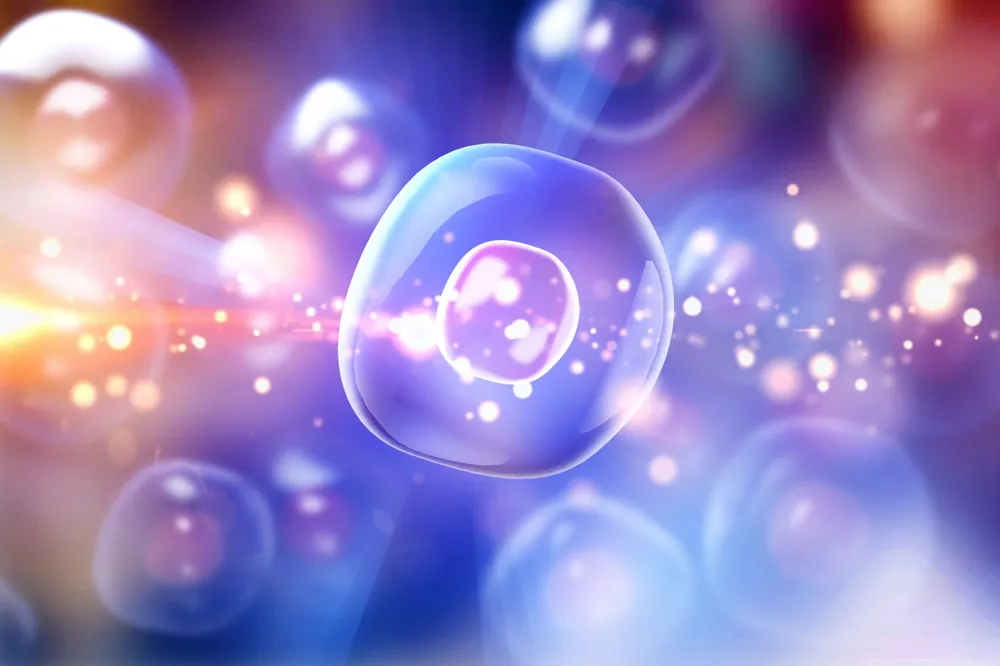Researchers have published a new animal study showing that the plant flavonoid naringenin may be useful in targeting problematic senescent cells in the brain.
Ribes meyeri (also known as Ribes meyeri maxim) is a native plant to central Asia, Mongolia and Northeast Afghanistan and is part of the Saxifragaceae family and the Ribes genus; this is why it appears similar to the blackcurrant, a species of popular fruit bush typically grown in Europe.
The plant leaves and roots are a rich source of flavonoids, some of which have anti-inflammatory and anti-cancer effects and have been identified as a potential source of senolytic compounds that target senescent cells [1]. Naringenin is just one of the various active flavonoids present in R.meyeri.
Naringenin was first isolated from R.meyeri by Dr. Zhou’s research team in a 1995 study of the Ribes genus native to China [2]. The flavonoid is also present in high amounts in R.sativum, otherwise known as the redcurrant. It can also be found in the closely related R.nigrum (blackcurrant) and other soft fruits [3].
Naringenin is a known antioxidant and reduces amyloid-induced reactive oxygen species (ROS) inflammation similarly to other related flavonoids, such as quercetin and apigenin.
The researchers of a new study have investigated R.meyeri and naringenin for its potential ability to reduce proinflammatory signaling by senescent neural cells and spur neurogenesis, the process through which new neurons are created in the brain, in mice [4].
There is particular emphasis on the pro-inflammatory cytokine tumor necrosis factor alpha (TNF-a), an important cellular signaling protein that regulates systemic inflammation and is one of the key cytokines that make up the acute phase reaction. TNF-a is a constituent of the senescence-associated secretory phenotype (SASP), the cocktail of proinflammatory signals given off by senescent cells that impairs tissue regeneration, causes cells to behave incorrectly, impedes cell to cell communication, and contributes to inflammaging, the chronic age-related inflammation present in the elderly.
The research community is currently focused on developing ways to combat the SASP from senescent cells, either by blocking its activity or through senolytics, a direct method of destroying senescent cells. Flavonoids such as quercetin, apigenin, and naringenin have been of great interest in this context, given that a number of them appear to target senescent cells.

Read More
Aging is associated with neurological impairment and cognitive decline. Flavonoids are very promising in anti-aging research in mouse models. Ribes meyeri anthocyanins are rich in abundant flavonoids, but their anti-aging biological activities remain unknown. In this study, we prepared an R. meyeri anthocyanin extract and analyzed its effects on neural stem cell (NSC) senescence in vivo and in vitro. We isolated mouse NSCs and used cell counting kit-8 (CCK-8), cell cycle, reactive oxygen species (ROS), and immunofluorescence methods to analyze the anti-aging effects of R. meyeri anthocyanins as well as naringenin (Nar), which metabolic analysis revealed as an important flavonoid in R. meyeri anthocyanins. RNA-sequencing (RNA-seq) and enzyme-linked immuno sorbent assay (ELISA) methods were also used to investigate Nar-specific mechanisms of anti-aging. After R. meyeri anthocyanin treatment, NSC proliferation accelerated, and NSCs had decreased senescence markers, and reduced P16ink4a expression. R. meyeri anthocyanin treatment also reversed age-dependent neuronal loss in vivo and in vitro. Nar blocked mNSC aging in vitro and improved spatial memory and cognitive abilities in aging mice through downregulation of plasma TNF-a protein. These findings suggest that R. meyeri anthocyanins increase NSC proliferation and improve neurogenesis with aging via Nar-induced reductions in TNF-a protein levels in vivo.
Conclusion
This research is of interest as it could be another useful compound in the battle against senescent cells, and the resulting neurogenesis, likely the result of reduced chronic inflammation, is promising. Neurogenesis typically occurs during development and early childhood, but it does continue into adult life and is an important factor in cognitive function and recovering from brain injury.
Compounds that are able to reduce systemic inflammation, reduce excessive ROS, and potentially target senescent cells and their secreted SASP are incredibly important, and, without a doubt, we will see more of these natural plant flavonoids appearing in the context of senolytics in the near future.
Literature
[1] Zhu, Y., Doornebal, E. J., Pirtskhalava, T., Giorgadze, N., Wentworth, M., Fuhrmann-Stroissnigg, H., … & Kirkland, J. L. (2017). New agents that target senescent cells: the flavone, fisetin, and the BCL-XL inhibitors, A1331852 and A1155463. Aging (Albany NY), 9(3), 955.
[2] Ling-ti, L. (1995). A Study on the Genus Ribes L. in China. Journal of Systematics and Evolution, 33(1), 58-75.
[3] Karjalainen, R., Anttonen, M., Saviranta, N., Stewart, D., McDougall, G. J., Hilz, H., … & Törrönen, R. (2008, September). A review on bioactive compounds in black currants (Ribes nigrum L.) and their potential health-promoting properties. In I International Symposium on Biotechnology of Fruit Species: BIOTECHFRUIT2008 839 (pp. 301-307).
[4] Gao, J., Wu, Y., He, D., Zhu, X., Li, H., Liu, H., & Liu, H. (2020). Anti-aging effects of Ribes meyeri anthocyanins on neural stem cells and aging mice. Aging, 12(17).
Image by Christian Hummert (Ixitixel) – Own work, CC BY-SA 3.0







